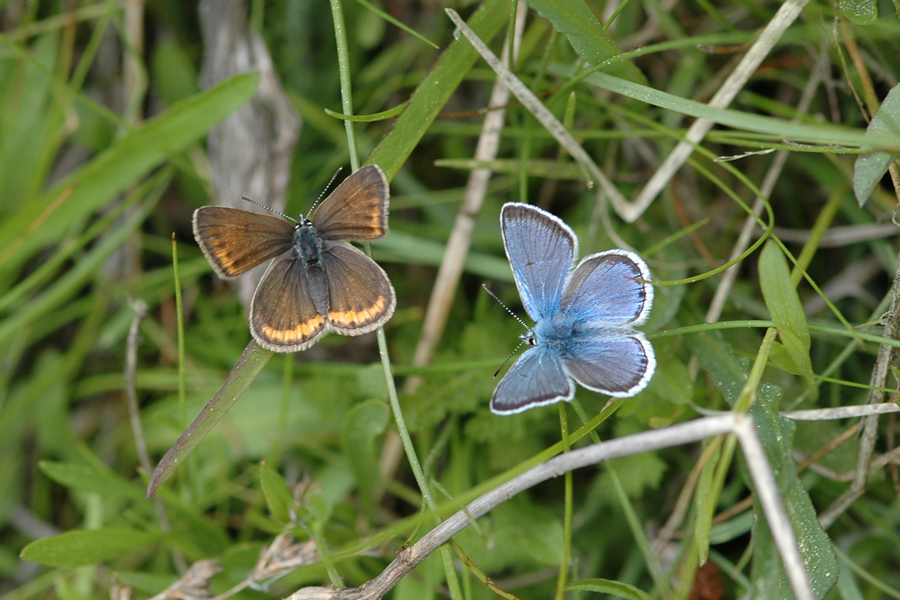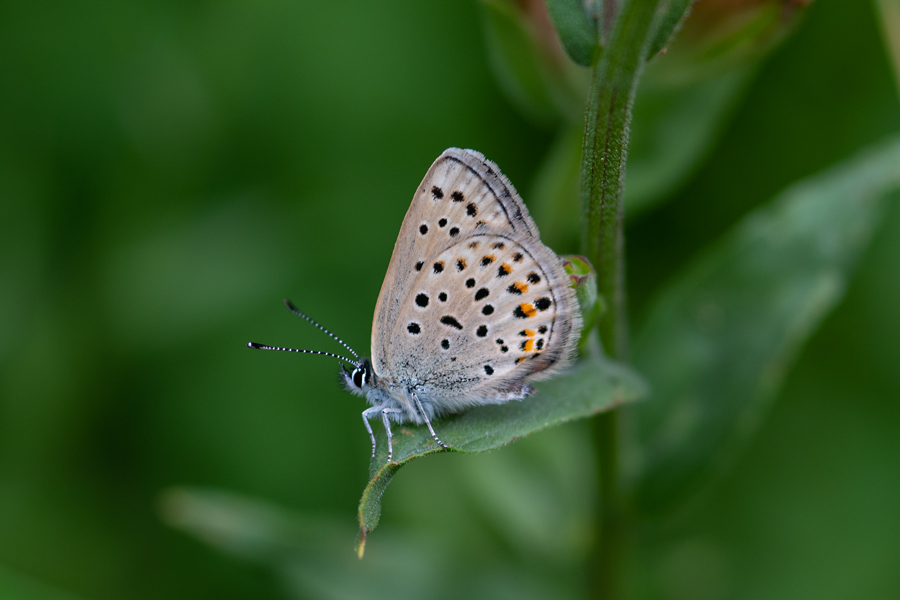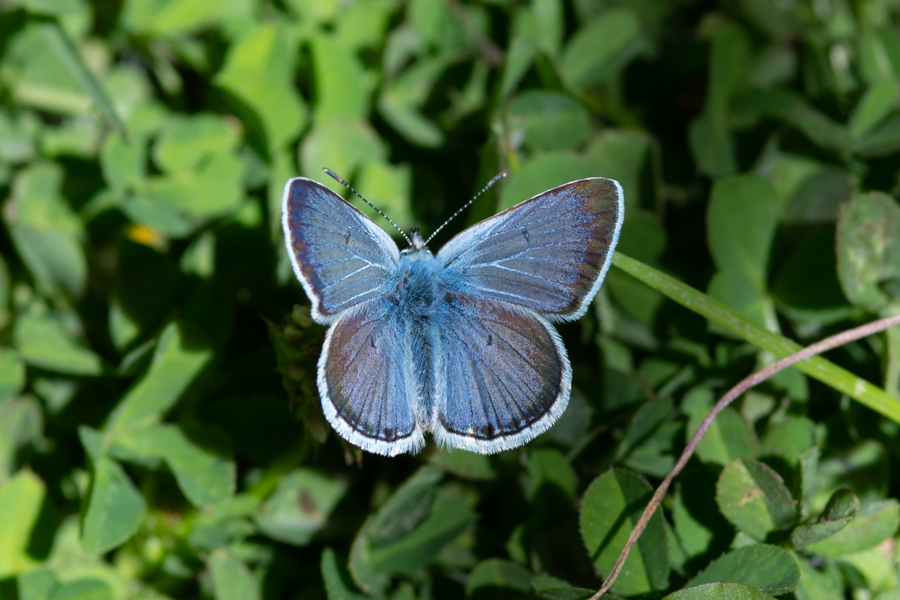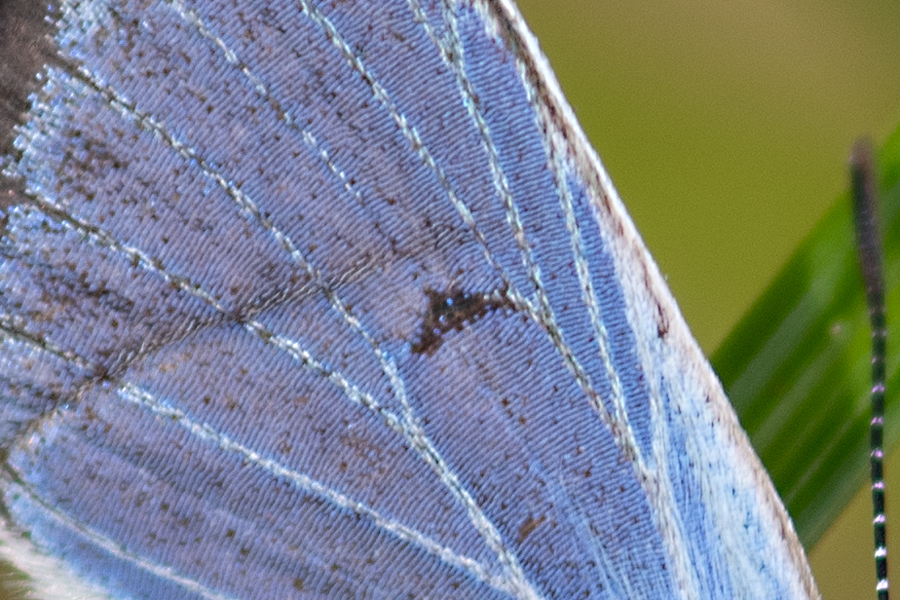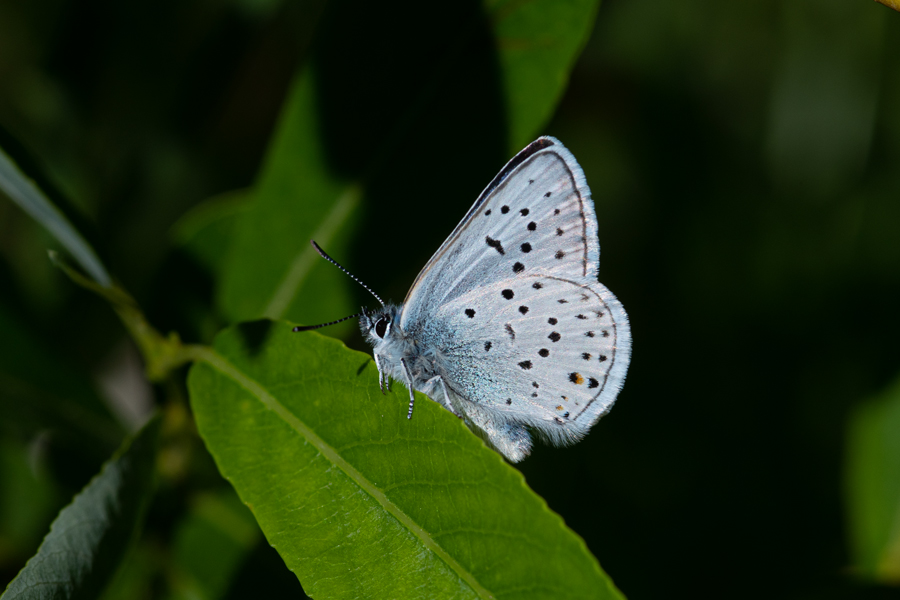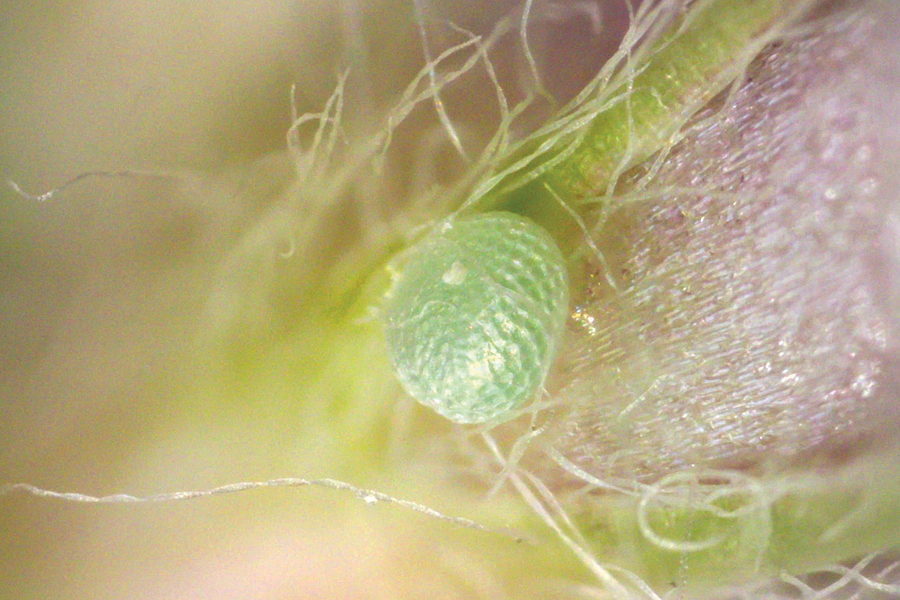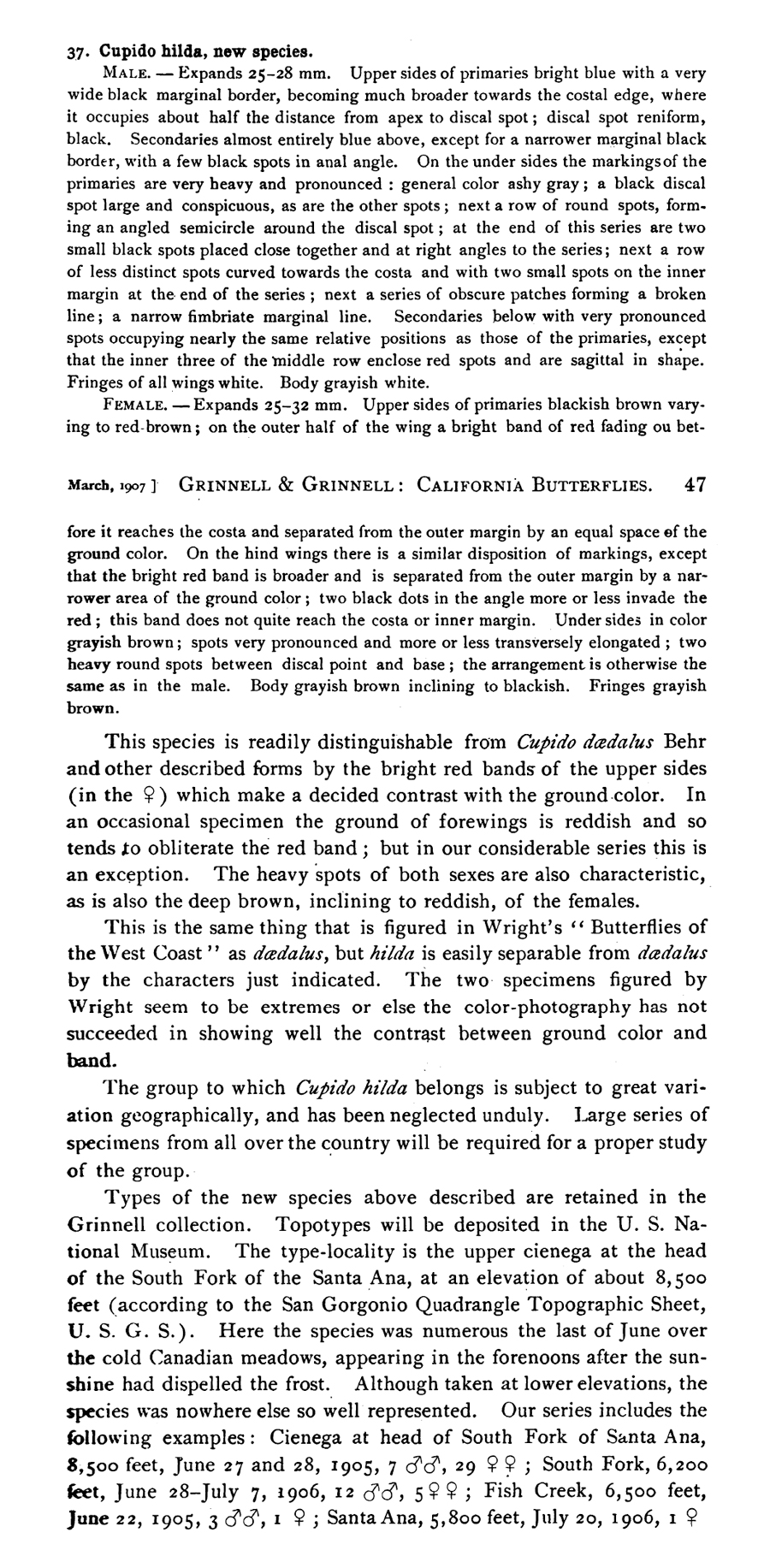Icaricia saepiolus hilda
Hilda Greenish Blue
This subspecies of the greenish blue is not uncommon in higher mountain meadows where the larval host clovers grow. In the San Bernardino Mountains, a few places to find this blue in late May through June and into July are Bluff Lake Meadow, Wildhorse Meadow, and Green Canyon. If there are lupines nearby, male Icaricia icaricia evius may also be flying, which can make identifications a bit confusing where they overlap. Look for the small black bar at the end of the cell above in saepiolus; it is absent (or nearly so) in icarioides. Females are easy to tell apart if you see the upper side: saepiolus is a rich brown, while icarioides has a distinctive, washed-out bluish coloration. The undersides are more of a challenge, but saepiolus hilda is usually more boldly marked on the hind wing than icarioides evius.
Icaricia saepiolus hilda - 'Hilda' Greenish Blue. Female on the left, male on the right. Bluff Lake Meadow, near Big Bear, June 27, 2006.
Same female Icaricia saepiolus hilda. Note how the yellow/golden aurora extends into the forewing. This one is obviously among her larval host plants in the meadow.
On the underside, females have a kind of bronze sheen while males have a ground color that is more whitish/light gray. It's especially obvious in person. This one was resting on an overcast day at Green Canyon, southeast of Big Bear Lake. July 8, 2021.
A nice male 'Hilda' Blue. Note the thin black mark in the middle of the forewing. This was at Green Canyon, the trailhead leading from the north up to Sugarloaf Mountain. Males patrol the wet area right at the trailhead where there is plenty of clover. June 14, 2020.
Here is a close-up of the black scaling at the end of the cell on the male forewing. This was at Green Canyon as well. July 8, 2020.
Ventral of a male. Also from Green Canyon, but a year later. June 25, 2021.
I watched a female place this egg into the flower head of Trifolium wormskioldii, the clover that the larvae eat. This was in the meadow east of Bluff Lake near Big Bear, August 17th, 2023.
This is the Grinnell's original decription from a 1906 paper listing their finds from the San Bernardino mountains.
©Dennis Walker
